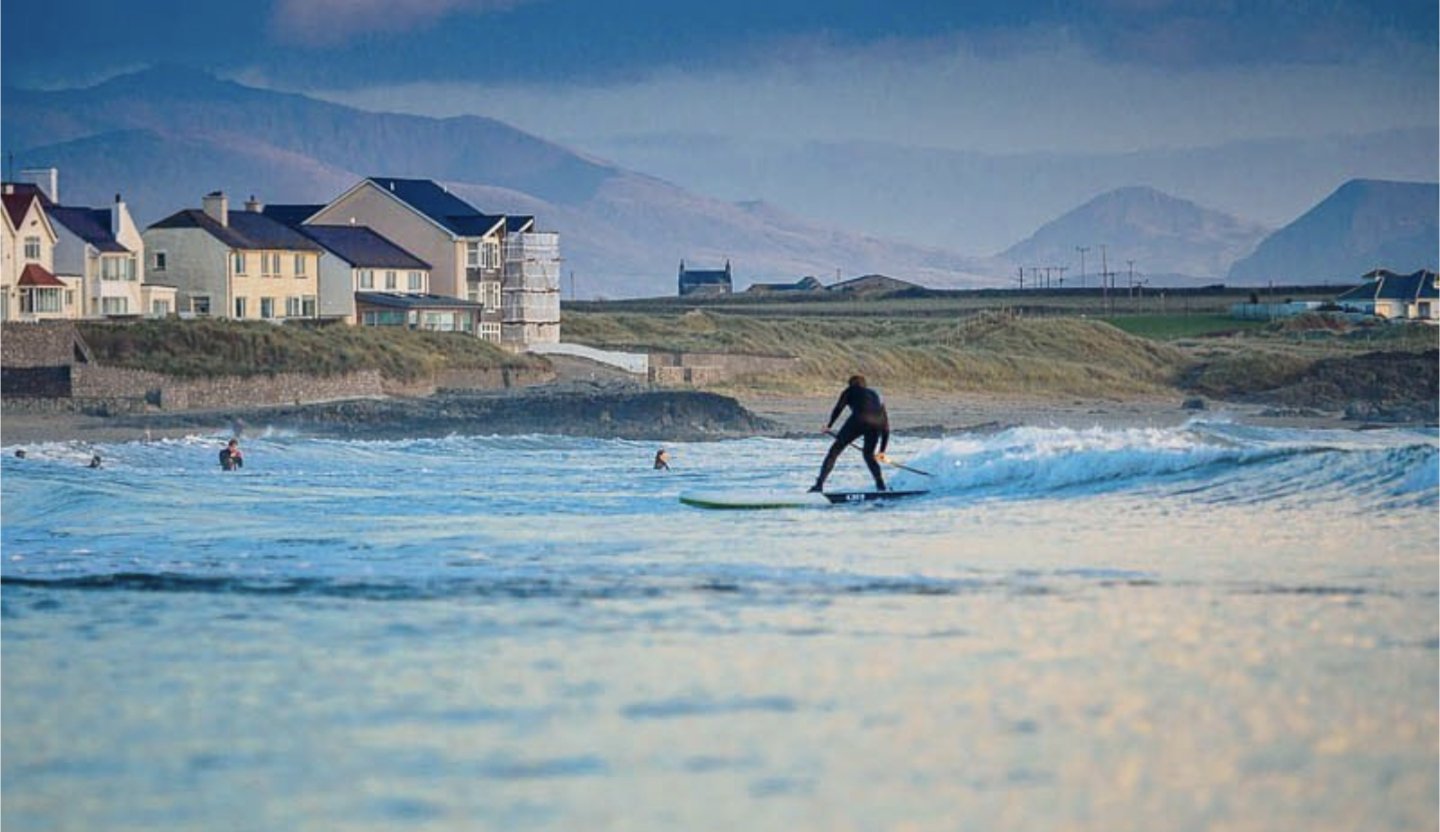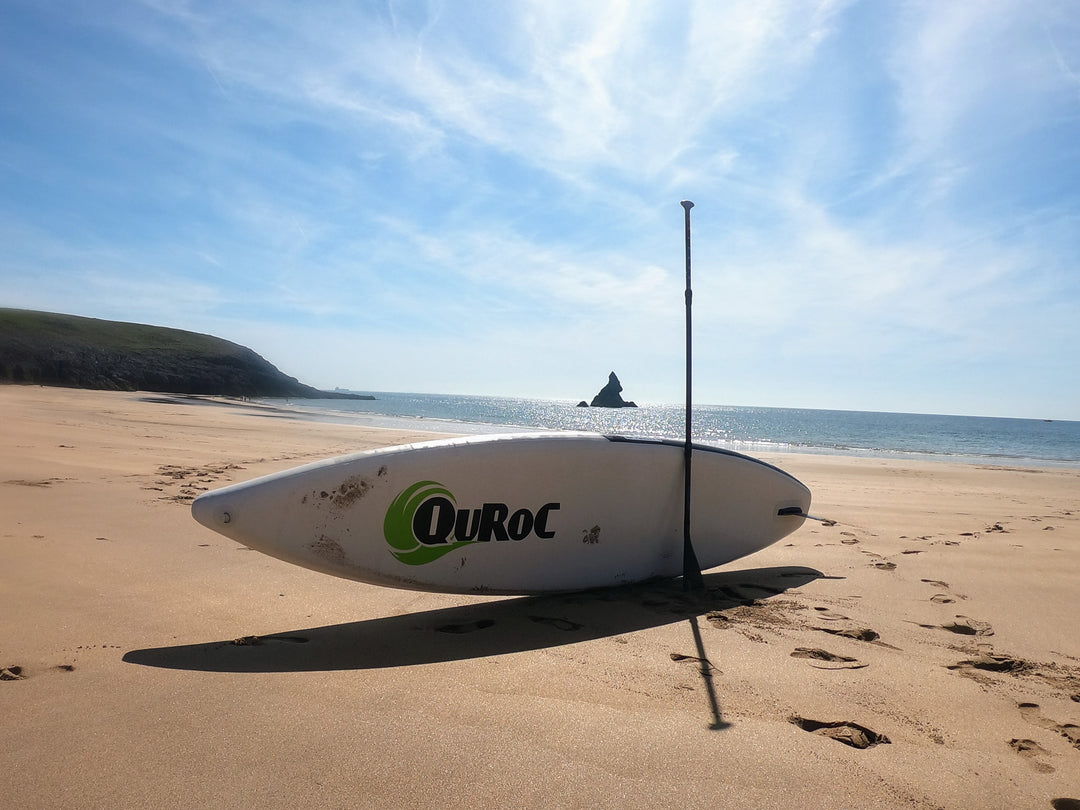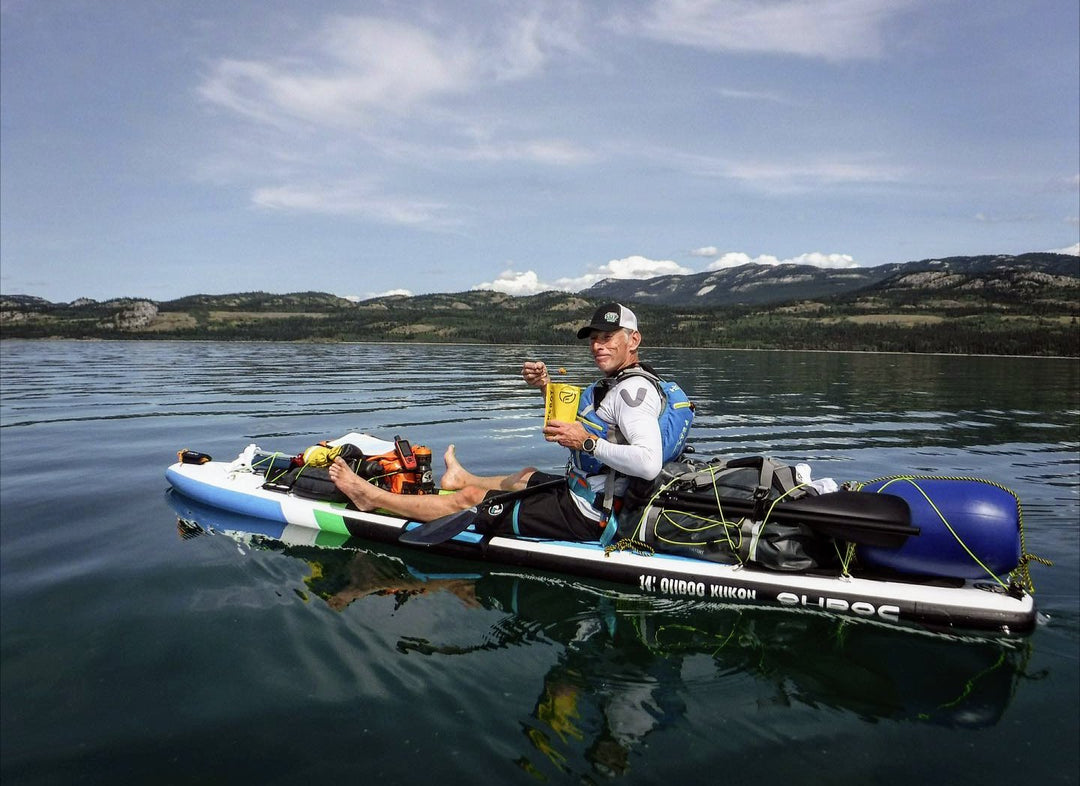Can you surf on a paddle board? Yes, you can! Paddle board surfing, also known as stand-up paddle surfing, has become increasingly popular over the years. It's a unique and thrilling way to ride waves, combining the balance and control of surfing with the power of paddle boarding. For those who are new to the sport, it can seem overwhelming or intimidating to get started.
That's where this blog comes in. We’re here to provide you with everything you need to know about paddle board surfing, from choosing the right board and equipment to mastering the proper techniques. Whether you're a seasoned surfer looking to try something new, or a beginner interested in exploring the sport, this blog will give you the tools and knowledge you need to hit the water with confidence and make the most of your paddleboarding surf experience.
What is SUP surfing?
SUP surfing, or stand-up paddle surfing, is a form of paddleboarding that involves standing on a board and using a paddle to move through the water. Unlike traditional surfing, which requires the rider to lie prone on the board and use their arms to paddle, SUP surfing allows the rider to stand upright and use their whole body to manoeuvre the board and catch waves.
SUP surfing originated in Hawaii in the 1960s, but has recently gained popularity worldwide as a fun and challenging water sport. It requires a good sense of balance, strength, and endurance, as well as knowledge of wave conditions and surfing techniques.
SUP surfing can be done in a variety of water conditions, from calm lakes and rivers to challenging ocean waves. It is a versatile sport that can be enjoyed by people of all ages and skill levels.
Top Paddle Board Surfing Tips
Here are a few of our top tips to get you onto the waves safely and efficiently.
Safety is Crucial
Surfing with a stand-up paddleboard can pose more risks compared to paddling on calm waters. As such, prioritising safety is crucial. It's recommended that you use an ankle surf leash in case you fall off the board. All our paddle boards come with a coiled pro SUP leash. Our performance coiled leash keeps the leash out of the water, reducing drag whilst the double swivel design prevents leash tangle.
Depending on your level of experience, wearing a buoyancy aid might also be necessary. Even experienced paddlers may face challenges when paddling in waves, making this precaution important.
When starting out, it's advisable to choose a quieter day and stick to the white-water area until you feel confident enough to paddle through the waves and catch them on the way back. It's also essential to speak to others on the beach to learn about any potential dangers or riptides to avoid in the water.
Experience Level
If you're new to both stand-up paddleboarding and surfing, can you still surf on a paddleboard? The best approach is to first gain confidence paddling on calm waters before attempting to ride waves. This is primarily for safety concerns. Surfing with an inflatable stand-up paddleboard demands a higher level of balance and control, which only comes with practice. Therefore, we recommend this activity only for experienced paddlers who have honed their skills over time.
Type of Paddle Board
When it comes to choosing a paddleboard for surfing, it's best to look for a shorter board with a pointed nose and a narrower tail. These features allow for greater manoeuvrability and control on when catching a wave.
The Quroc Qi Crossover 10′ 6 All Rounder Stand Up Paddleboard lives up to its name by being a highly versatile board suitable for various activities. While it's ideal for flat water cruising, it's also adaptable enough to handle some basic surfing.
Technique is Key
We have established that it is possible to surf with a paddleboard, and we know what gear and equipment are necessary. However, you may still be wondering about the specific techniques involved.
Adjusting your stance, with one foot slightly in front of the other, can enhance your stability in moving water. It's crucial to be prepared for falling into the water more often than when paddling on calm waters, and ensure you are confident in climbing back onto the board. The safest approach to getting started with SUP surfing is to take lessons and learn the fundamentals before attempting it on your own.
Is SUP Surfing Easier Than Surfing?
Stand-up paddle (SUP) surfing and traditional surfing require different skills and techniques, so it's difficult to say whether one is easier than the other.
On one hand, SUP surfing provides the added stability of standing on a larger board, making it easier to balance and catch waves. The paddle also allows for an additional source of power, making it easier to catch waves earlier and faster. Additionally, paddling out to the waves is less physically demanding than traditional surfing, as you can stand and use the paddle to propel yourself forward.
On the other hand, traditional surfing requires more finesse and control, as well as a greater ability to read and anticipate the waves. The smaller board used in traditional surfing requires more balance and agility to stay upright and manoeuvre on the wave. Traditional surfing also relies more on the surfer's body positioning and weight distribution to control the board and ride the wave.
Shop Versatile Paddle Boards with Quroc
At Quroc, we produce the UK’s highest rated inflatable paddle boards. Our paddle boards are designed and thoroughly tested in the UK. So, no matter what type of paddle board adventure you’re after, we’ve got you covered. If you’re wondering can you surf on a paddleboard, you’ll find the answer you’ve been looking for with Quroc’s boards. Browse our wide range of paddle boards, all coming with everything you’ll need to get going on the water.





